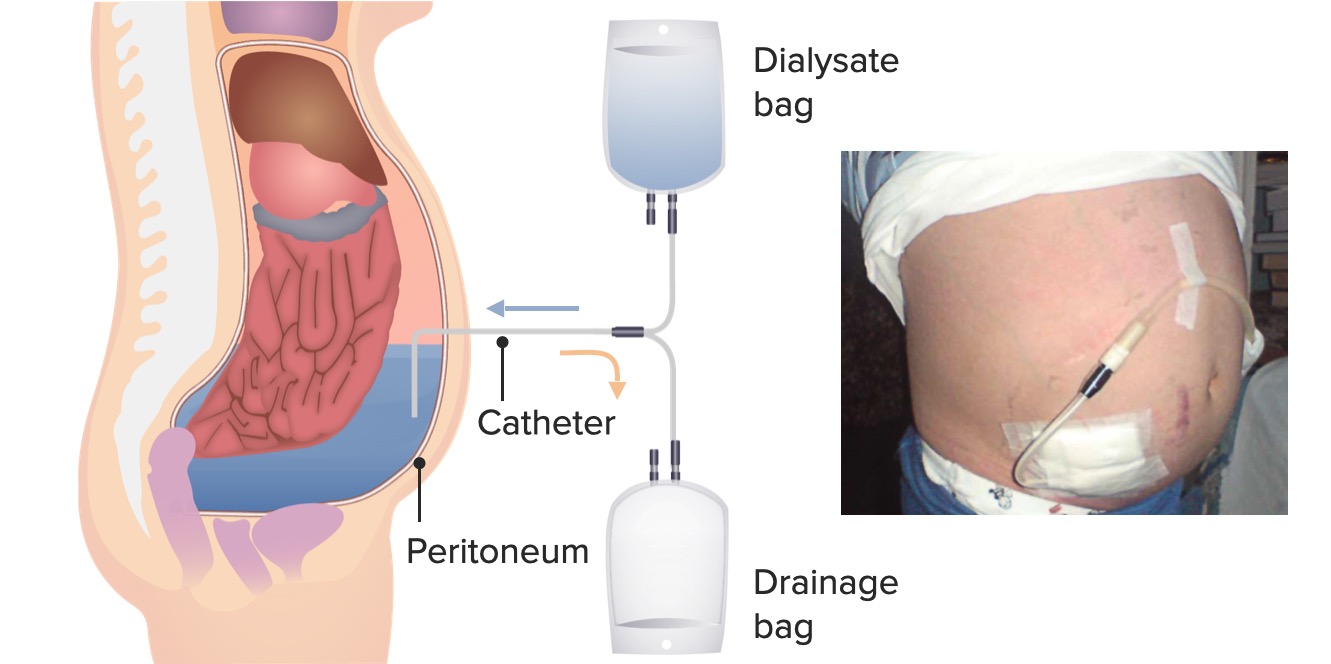Playlist
Show Playlist
Hide Playlist
Continuous Renal Replacement Therapy – Special Devices (ICU and Brain Death Determination)
-
14 -Special devices in the ICU and brain death.pdf
-
Download Lecture Overview
00:06 I mentioned briefly Continuous Renal Replacement Therapy. 00:12 And this is a diagram of how that therapy works. And the sort of ball in the middle of the diagram is a series of filters and pumps that moves the blood through the circulation, from the circulation of the patient into a machine. And in the machine, the blood is filtered and materials that are in excess, such as nitrogenous wastes, are removed just like the kidney would do it. 00:42 But it's done slowly and continuously So this is a 24 hour process. It's on all the time. And the nurses have to monitor this and make sure that it's working appropriately. 00:54 This has caused an improvement in Acute Renal Failure Outcomes. And often complete recovery. So patients recover completely and do not have to go on hemodialysis necessarily after they're discharged from the ICU. And this has really improved how patients feel afterward as well. Because hemodialysis is not fun, and if you can keep people off of it, it's a big plus in their lives.
About the Lecture
The lecture Continuous Renal Replacement Therapy – Special Devices (ICU and Brain Death Determination) by Brian Warriner, MD, FRCPC is from the course The ICU.
Included Quiz Questions
Which of the following interventions for renal failure is preferred for its lesser hemodynamic disruption?
- CRRT
- SLEDD
- IHD
- PD
- SLED
Which health care professional usually orders CRRT in the ICU?
- Intensivist
- Cardiac anesthesiologist
- General anesthesiologist
- ICU nurse
- Chief ICU nurse
Customer reviews
5,0 of 5 stars
| 5 Stars |
|
5 |
| 4 Stars |
|
0 |
| 3 Stars |
|
0 |
| 2 Stars |
|
0 |
| 1 Star |
|
0 |





